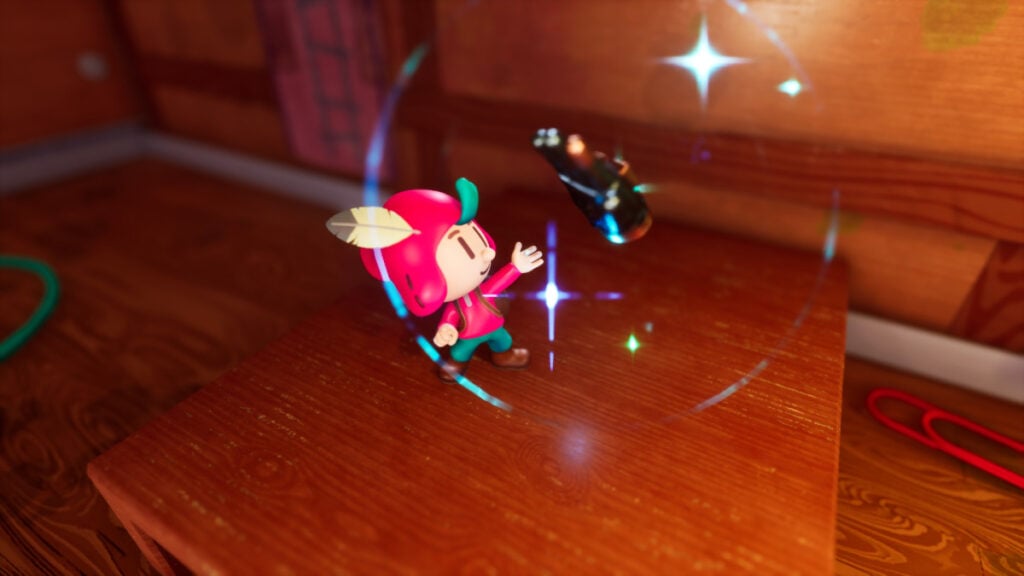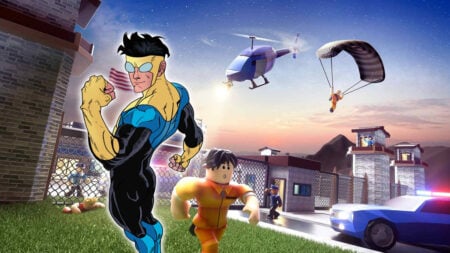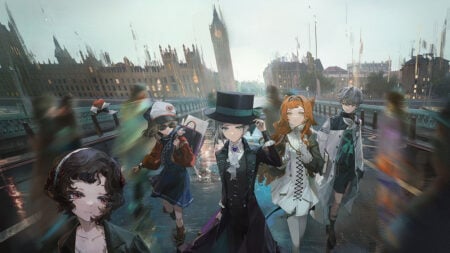Skip To...
The Plucky Squire is one of the few games that has evoked that feeling of déjà vu in me. As I hopped between the two beautifully made dimensions, I couldn’t help but remember the fairy tales I used to read as a kid. At the time, they all seemed a bit simple and followed a similar plot. You had a looming threat upon a magical realm, and the fated hero was ready to save the day. And you know what? Sometimes beauty lies in simplicity, and I don’t mean simple in a bad way. Sometimes, all we need is a good excuse to dish some butt-kicking to a big baddie in an epic way. That’s what The Plucky Squire delivers. And it does it in the most colorful, memorable, and endearing way.
The Plucky Squire follows the tale of Jot and his faithful companions trying to stop one of Jot’s archenemies’ latest schemes. In this short yet unforgettable journey, you’ll experience top-notch humor, homage to many classical games wherever you look, and a solid escape full of intriguing puzzles, engaging platforming sections, and the best dimension-swapping mechanic I’ve seen in a while.
Saving the Land of Mojo, One Page at a Time

The Plucky Squire begins by showing everybody how a full-fledged hero Jot is. He’s beaten Humgrump, the evil wizard, more than once, and peace reigns in the Land of Mojo. Yet, in a desperate attempt to defeat our protagonist, Humgrump discovers all characters live in a storybook and conjures a type of magic that allows him to bend both the 2D and 3D realities. After this revelation, Jot has no other option than to stop the bad guy and restore the happily ever after ending.
The exciting part about this dimensional conundrum is how characters become aware that they are, well, storybook characters. While Jot is revered by every denizen of the Land of Mojo, the interactions with his friends, Violet and Thrash, are terrific. They soon realize they have a more significant part to play than just that of a supporting character, and as the story progresses, they all grow on you considerably.
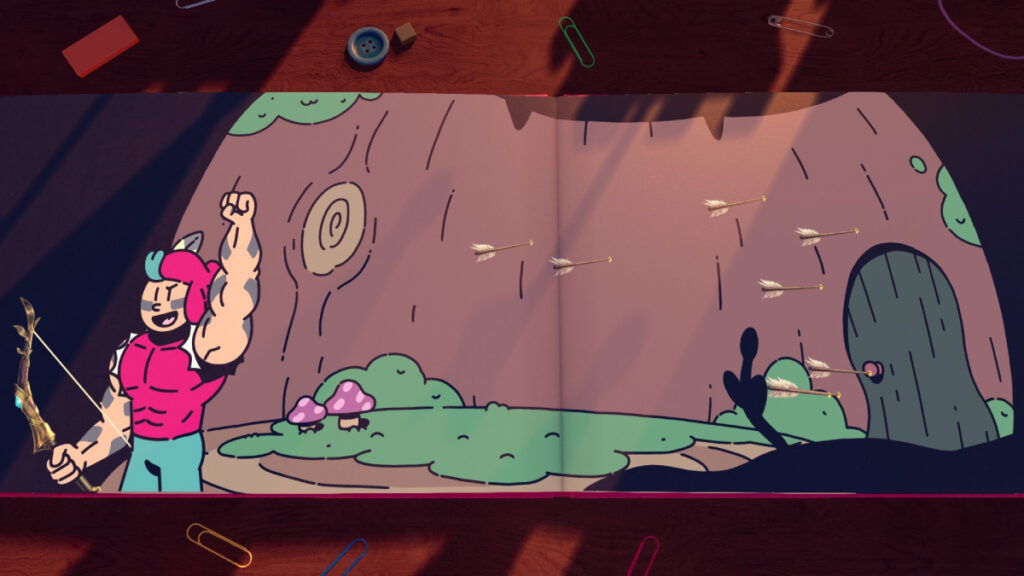
Furthermore, your world-saving antics are accompanied by entertaining gameplay choices. The moment-to-moment exploration is simple yet effective. The game takes a lot of inspiration from The Legend of Zelda. You’ll be slicing enemies with short combos while you do your best Link-like grunts. You can also unlock a few combat skills to shake things up. One that lets you throw your sword like a boomerang and a spinning attack to hit many enemies simultaneously. It’s not the most epic combat, but one that works nonetheless.
However, the highlights are the many unique mini-games across almost all chapters. Some will see you defeat an enemy with a match-the-beat activity reminiscent of Hi-Fi Rush. Others turn into a frenzied arcade shooter. Overall, it was nice to see each chapter constantly try to bring a new mini-game. I felt they weren’t as frequent as I would’ve wanted. Yet, that’s because The Plucky Squire‘s best gimmick is that of manipulating the two worlds you now inhabit.
A Puzzling Storybook

The Plucky Squire tends to follow a structure of entering a chapter, solving a bunch of intricate puzzles, and finishing it off with a mini-game. I enjoyed the former. Puzzles in the game are perfectly elaborate and make great use of both dimensions. For instance, there is a puzzle where you need to distract a rat that is guardian an area. In this place, you have a few items and several sentences you can find in a storybook. Jot can smack some of the words in the sentences to alter the landscape or objects. One metal block could become something more alluring for the rat if you’re creative enough.
However, the puzzles aren’t limited to the storybook. To progress, you’ll have to hop outside of your 2D landscape. In one of the later chapters, I found a passage blocked by spinning blades. Since there wasn’t anything in the book to block the blades, I had to look around the 3D desk for something. This led me to a quest where I had to assemble a rocket to get an item that would let me stamp things inside the book, thus freezing them in place. I wish there were even more puzzles throughout The Plucky Squire because they are the ones that truly shine. Still, even with a few of them, they all felt like intricate brain teasers. Also, if you’re ever stuck, there’s one helpful wizard ready to assist, but I recommend trying them out first before throwing the towel.
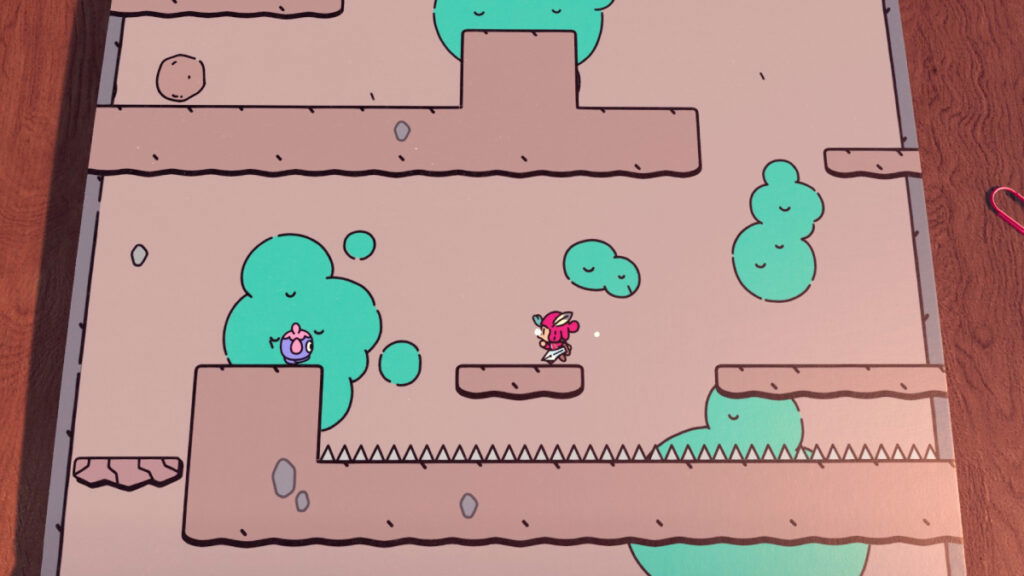
Also, so many tools enhance puzzles and gameplay in general. As you progress through the story, you’ll unlock the skill to flip the storybook’s pages to grab words or objects from other panels. There’s even a skill that lets you tilt the book to make objects slide around it. While great, they come with a slight technical baggage. After flipping through some pages, I noticed a few frame drops, but nothing game-breaking. I did experience one bug that blocked my progress during chapter six, though. Each time I entered a certain area, the game would freeze and would not let me progress. But after restarting the chapter, it all went smoothly.
The Best of Two Dimensions

The biggest gimmick of The Plucky Squire is the ability to hop in and outside the storybook. In other words, swapping between a 2D to a 3D perspective, and vice-versa. While the gameplay part is great, I felt captivated by the gorgeous art style. The storybook levels are full of color, life, and fantastic references. The best place is the capital city full of NPCs who pay homage to modern and old artists, such as Frida Kahlo, Banksy, Van Gogh, and more.
Yet, the alluring details do not stop there. The 3D world is equally great, and it does a perfect job of bringing that colorfulness from the storybook to the “real” word Jot visits. Bottles of paint, brushes, and drawing materials are just some of the objects that decorate the landscape and set the stage for many platforming sections and even environmental puzzles. Plus, the developers put a lot of care into keeping the same animations in and outside of the book, which is commendable and makes the transition between worlds more cohesive.
Lastly, the characters are some of the best and most memorable ones I’ve seen in any recent action-adventure game. From the wise DJ wizard Moonbeard to the heavy metal drummer mountain troll Thrash, all are unforgettable and impactful throughout the journey. In addition, you can collect art scrolls during the game. If that piques your interest, these show some of The Plucky Squire‘s concept art and early designs.
The Good Ol’ Gaming Days

In an industry that becomes bland day after day, it is always nice to see a project with a lot of heart, such as The Plucky Squire. It is short, simple, and goes to the point, but that’s the kind of adventure we need sometimes. Roaming around a colorful land to beat an over-the-top baddie reminds me of the journeys I enjoyed when I was younger—in video games, of course.
While there were a few technical issues, they never dampened my excitement. On the contrary, I didn’t mind restarting a few chapters or reloading a save to continue this escapade. It might not have lasted a long time, but I will always remember The Plucky Squire as one of this year’s most unique and endearing experiences.
Review copy provided by Publisher.
The Plucky Squire (PC Reviewed)
The Plucky Squire is a love letter to classic adventure games that adds a dimensional-hopping twist to the equation. While short, it is one of the most unforgettable experiences of this year and one any gamer should try at least once.
Pros
- Superb art style
- Intricate puzzles
- Top-notch mini-games
Cons
- A few technical issues

